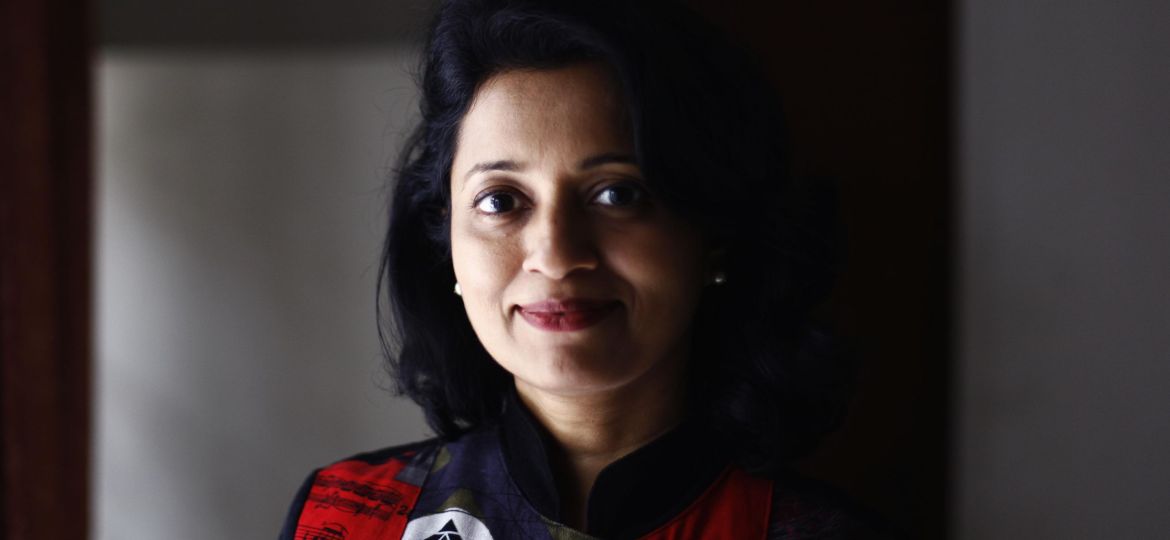
Shylashri Shankar is a writer and researcher. She has a PhD from Columbia University, an MSc from the London School of Economics and Political Science, an MA from the University of Cambridge, and a BA from Delhi University. In 2021, she won the AUTHER award for best non-fiction for her book, Turmeric Nation: A Passage Through India’s Tastes, which is a deep dive into questions that explore the connection food has with history, society, religion, identity and politics, amongst other and related themes. In her own words, “I write with a fountain pen on unruled paper and I love the process of making the words open up the heart of the issue. My monthly column in Open magazine explores a diverse set of ideas on food, crime fiction, gardening, politics, law, and history.”
Shikha Aleya (SA): It’s such a pleasure to interview you, thank you Shylashri. My first question is about your book, Turmeric Nation, and directly related to our theme for this issue of In Plainspeak. As you were researching and writing this book, what were some possible thoughts and stories you identified as connections between food, and gender and sexuality?
Shaylashri Shankar (SS): Power relations are perceived through food. Take, for instance, the concept of the eater and the eaten in the creation hymn of the Rigveda. Nature is regarded as a hierarchically ordered set of stomachs. Eating is simultaneously an act of nourishment, a display of wealth and status, and a demonstration of domination over that which is eaten. “The eater,” as Indologist Brian Smith put it, “is superior to his food, in society as well as in nature…the [castes] are divided into eaters and food.”
These power imbalances play out in the way gender (how we identify ourselves) and sexuality are seen through the lens of food. For instance, despite the increasing awareness of multiple genders and sexual identities, the cultural stereotype continues to be binary and gives a less powerful position to the woman. Women cook, men chef. Cook equals someone who prepares food; chef equals the head of the kitchen (usually in the professional sphere). Virtually all human societies align women with nature and men with culture, separating the utilitarian craft (i.e. cook) from the purely aesthetic art (chef) and giving men more cultural value. Stories from the Mahabharata refer to Bhima serving as a cook during the Pandavas’ years of exile. The Tamil word for a ‘cook’ in weddings and ritual feasts refers to a male cook. And in south Indian temples, it is men who cook the offerings to god.
At the same time, love is also expressed by a mother (a gendered role) through the food she/they cook in the kitchen. Recipe books here and abroad, even by male chefs, refer to the dishes cooked by mothers and grandmothers. Our sense of comfort comes from food we ate in the kitchens of our childhood. When our happiest and fullest sense of ourselves comes from reliving and replicating these memories for those whom we love, why do we have to pander to the old dichotomy of dismissing this gendered role as nature?
With the entry of multiple ways of perceiving our gender, it would be interesting to examine how these shake up the stereotypes. Or do men retain their dominant status while all the other genders are lumped into the same box and aligned with nature, not culture?
The sexuality dimension of food is connected to our behaviour as a woman, man, non-binary, transgender or queer person, when we encounter pleasure, in a biological and cultural sense. Several essays in the book focus on the cultural aspect – how we approach eating (as gourmands or as stoics), and the pleasure we experience (milk, sugar and honey as an aphrodisiac; does fasting accentuate the taste buds?). But in writing these essays, I focused more on how we, as humans, experience or choose not to experience pleasure through food.
Food can also link with celibacy – moksha and enlightenment. For the Digambara Jains, a perfect being like the Tirthankara cannot feel hunger – and this is taken to a logical end in the ritual practice of santhara, fasting unto death. By not eating, one can break the link to the physical world.
The relationship between the food we consume and attaining perfection has a gendered and sexualised narrative in our times. For instance, a perfect woman is synonymous with a slim body. Airbrushed photos, impossibly slender waists and waif-like models appear in magazines, on television and on the Internet. ‘Lose weight, don’t wait’ is the sign on many an auto rickshaw in New Delhi. This is different from the perfect individual in older philosophies, anchored in achieving a balance between the body and the spirit – think yoga, Unani and Ayurvedic diets.
SA: Those are fascinating connections you’ve pointed out. In this interview you have spoken of identity, in the context of citizenship rights, justice, constitutional provisions and related themes, saying: “Questions of who we are, how we identify ourselves and who we consider to be ‘others’ are pertinent in the current climate.” When you use these two lenses here, of food, and of gender and sexuality, what are your immediate observations?
SS: When we speak of an identity, we also speak of social control – of a power that determines who is included in that identity and who is not. Historically and in the present day, there continues to be an overweening (and in my view, fatal) emphasis on imposing an identity based on what one eats or chooses not to. Vegetarian or non-vegetarian, beef eater or non-beefeater, these have severe political connotations and can have fatal consequences for the person. But this way of looking at identity as something that is fixed and never-changing is wrong. That’s not how identities are actually forged. In my book, I examine how the multitudes within India surface in multiple mosaics. Based on the ‘purity’ and ‘polluting’ aspects of different kinds of food and spices, and the different ways and periods in which food is cooked, served, celebrated, rejected, controlled or denied, the book examines the creation and re-creation of mosaic bundles of food identities for different groups and regions and in different eras in India.
We can use the concept of mosaic bundles for different relationships between food, and gender and sexuality. Our mosaic bundles change with age, season, beliefs, time, and geography. For example, a kitchen is not as gendered a space as it was in the past. Men cook too. Another example is the attempts to make a Khitchri, a dish symbolic of India. But if one glances at the recipes of khitchri – there are vegetarian and non-vegetarian variants, simple recipes and complex ones, high cuisine and peasant fare versions. Given this variation, it would be hard to identify one khitchri. Similarly, like the different ethnicities and languages populating the notion of an Indian, our national cuisine has multiple regional delicacies in its make-up. So why do we have to have fixed notions of gender roles and food? They too change as our choices of who we want to be and how we want to be seen in terms of gender and sexuality become more fluid and change with time, geography, and interests. Social media like Facebook, Instagram, TikTok dupes us into thinking that we have created relationships when, in reality, we have only created a collection of things.
SA: Thank you. Please share a little bit about yourself as a person. How do you understand your own tremendous capacity to explore and reveal the intersections between what may appear to be disparate themes?
SS: I read widely, fiction and non-fiction, and in some cases, deeply. I also have a bit of a mono-maniacal bent of mind. When something interests me – e.g. a particular author’s books, or garden design or trees – I will find out as much as possible about that subject. I became interested in gardening after I lost my dog. I had this deep urge to create something from his ashes – sounds very macabre, but to me, it was a way of affirming life and love. So I began gardening, having never grown anything before – I had the death touch with plants earlier. I haunted the plant nurseries wherever I went, had lots of chats with gardeners, developed a passion for growing roses, read loads of gardening manuals, memoirs, did a couple of garden design courses, and learnt botanical art (with graphite) from an artist (those sketches are on the tabs in my website).
I also firmly believe that all that we imbibe through our mind, thoughts, senses and feelings are connected in a web of relationships that reside in our subconscious. Reading widely, travelling and being interested and curious about people and things creates these webs, and when a question or puzzle pops up, my conscious mind searches the subconscious for these connections between what on the surface look like disparate themes. But one needs to keep filling the well. Too much magpie-type Twitter and Instagram feeds don’t help, I think. I don’t have any social media apart from email (my book has an Instagram page) and now my website. I don’t watch television and I limit my Internet usage so that I don’t spend hours going down rabbit holes. And my phone tends to be in another room; I rarely carry it around on me. I write in a notebook with a fountain pen or a pencil. I became obsessed with inks recently and ended up (after a lot of research) getting a lovely set of Pilot’s Iroshizuku inks. I think better on a blank page than on the computer, and the physical act of writing creates some sort of link between my thoughts and words. All these habits help, I think, in gathering diverse elements into networks of cohesive relationships.
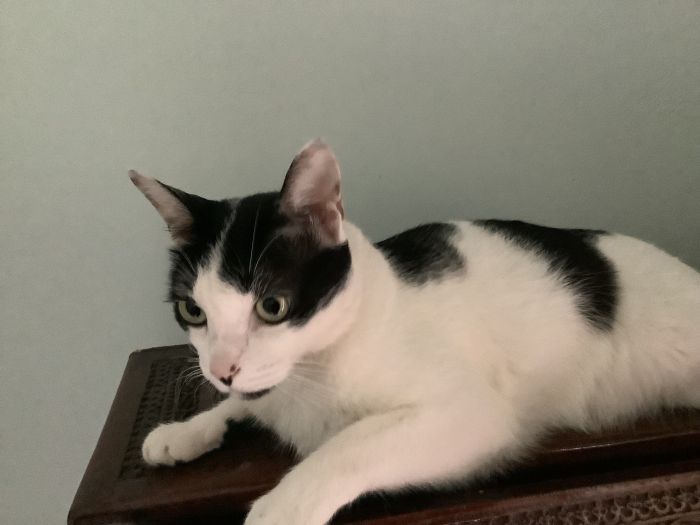
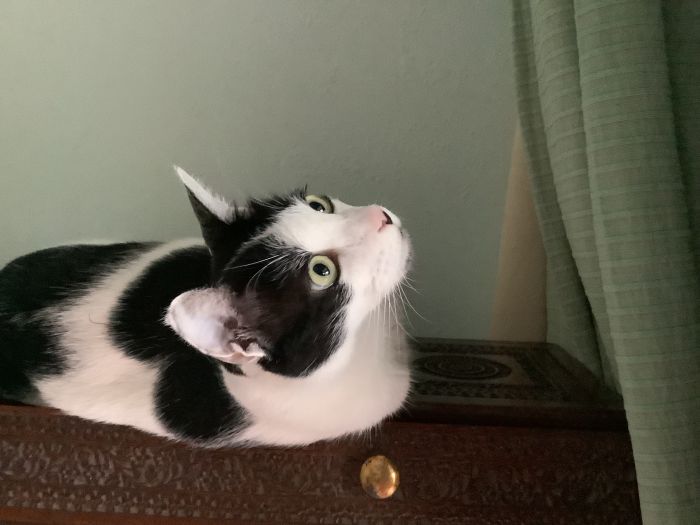
Puchka (Photos Courtesy of Shylashri Shankar)
SA: I had to google Iroshizuku inks! That reminds me of school and ink-stained fingers. It’s true, the physical act of writing is very different in its quality of feeling, from typing into a computer. My next question – this is a quick question about the cat who features on the Contact page of your website. Who is this cat? What are your thoughts about the human way of constructing identity and connecting with, or disconnecting from, non-human life around us?
SS: This cat is Puchka. She found us. She was about three months old and lying injured outside my gate late in the evening. My husband and I brought her inside and put her in a small cardboard box to give her a sense of safety. She refused to eat or drink anything. I took her to the vet and he said it was up to her if she wished to live or die. I spent every minute of the first two days with her, and on the second night, she climbed up on the bed and nuzzled me. She’d finally decided to live and eat. What’s interesting is that she behaves like a dog – comes when I whistle, eats sprawled over her bowl, growls at other cats outside the house.
From her, I’ve learnt to live and let live. She is a wild cat and cannot – and should not – be tamed. She must be treated with respect or else she will scratch or bite. She is very gentle if you are gentle with her. She loves to play, wants some of your attention but not all the time. Her identity – what is it? For me, she is Puchka – lovable for all her qualities. Not a cat, not a wild cat, not a non-human. Only Puchka. Perhaps that’s how we must connect with others – as fellow beings and not as categories.
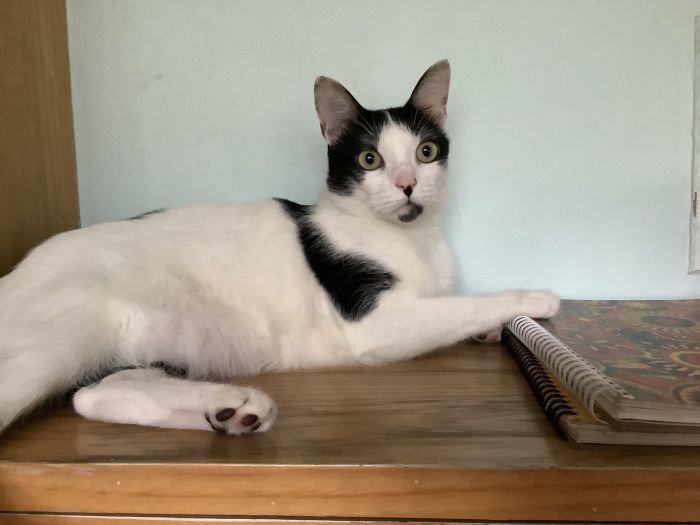
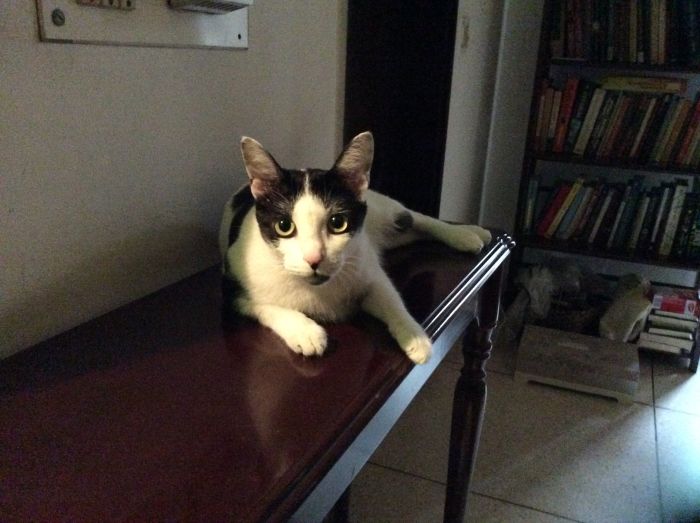
Puchka (Photos Courtesy of Shylashri Shankar)
SA: Love this piece about ‘fellow beings’. A last question: TARSHI has been engaging in an ongoing process of understanding and supporting the creation of Safe, Inclusive and Self-affirming, SISA, spaces across micro and macro environments. We’d love your inputs and reflections on this subject. Safety, inclusion, the self and self-affirming, how do you perceive these aspects of our life experiences?
SS: I had gone to Cape Town for a conference. One evening I went downtown by taxi to an art gallery, and when I came out it was around half past six. All the shops, (with their barred doors and windows) had closed. I was waiting on the road for my taxi to return. Initially, I felt unsafe because I’d been told it was a dangerous neighbourhood. Every person who walked towards me – I saw them as probable assailants. Then I began to relax. A parking attendant had come out further down the street and was laughing at something another man said to him. A possible assailant-person seemed to be an office-goer on his way home.
My sense of safety returned because I stopped making assumptions and really began looking at the people around me – noting the small details (a lunch box, car keys, an umbrella) that spoke of another person like me, minding their own business, following the rhythm of their day. All spaces have their own rhythms – one can find it through observation. For inclusive and self-affirming spaces – a similar logic will work, I think. It is about abandoning preconceived notions, and taking things at face value, without prejudice. The sense of the familiar – and of danger – comes with understanding the relationship between the person and the space.
Cover Image: Courtesy of Shylashri Shankar